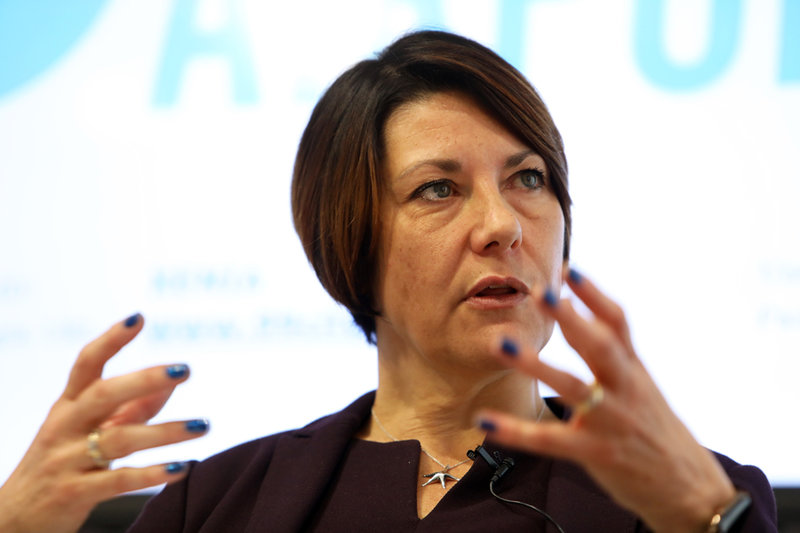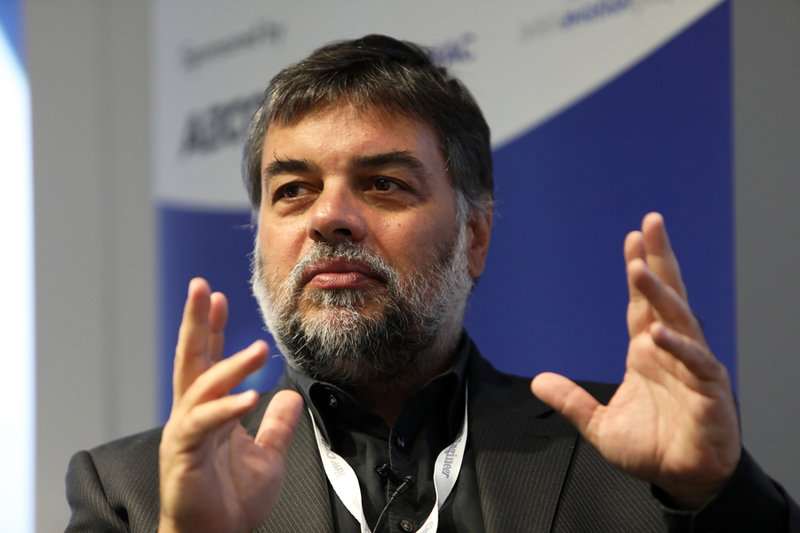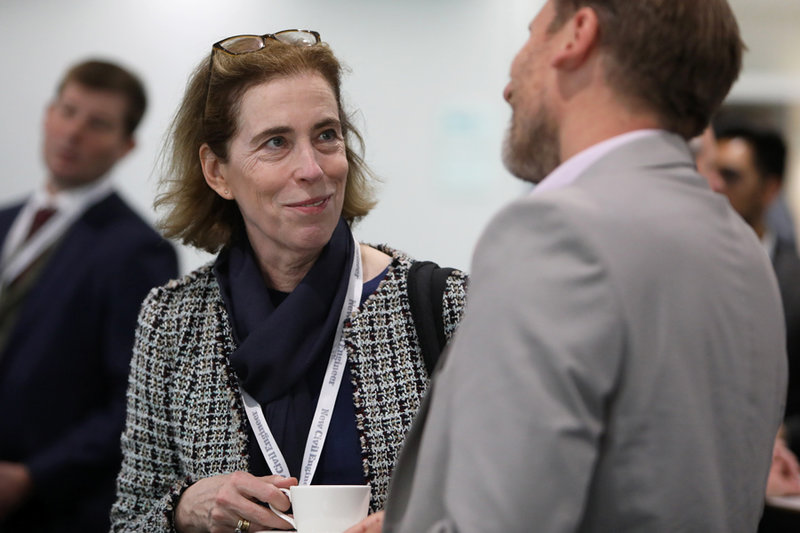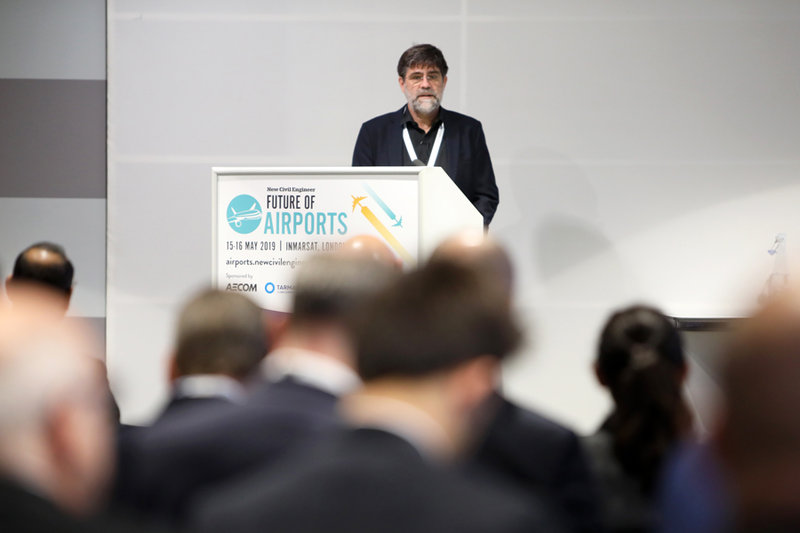Event Coverage
Five key takeaways from the NCE Future of Airports conference
The
future
of US air
traffic control:
the third option?
This year’s New Civil Engineer Future of Airports conference delved into the main challenges facing the sector, with discussion topics ranging from sustainable expansion to connectivity. Adele Berti highlights the biggest talking points from this prestigious event
The first half of 2019 has been anything but easy for UK airports, which are facing challenges such as Brexit, climate change and stricter drone regulation.
Pressures from the government, international agencies and environmental groups have largely increased since the beginning of 2019, though as the New Civil Engineer’s Future of Airports conference recently brought up, British airports are working hard to meet expectations.
Held in June this year, the two-day event involved some of the major stakeholders in the UK aviation industry for an annual round-up of the latest trends and innovations in the sector and a look at what the future holds for airports. Here are five key takeaways from the event.
All image courtesy of emap
Brexit and climate change have slowed economic growth
Taking place about a year after its previous edition, the conference was a great opportunity to round up a generally positive – if intense – 12 months, before assessing what’s coming next.
As the Airports Operator Association’s chief executive Karen Dee confirmed, airports across the country have witnessed steady but subdued growth across 2018 due to a number of factors.

Airport Operator Association chief executive Karen Dee.
Unsurprisingly, these included uncertainty regarding Brexit, the cost of fuel, capacity constraints and an overall decrease in international flights to Europe.
UK airports’ role in reducing emissions was also a key factor, as Dee stressed that sustainable fuels and airspace modernisation are more crucial than ever for improving hubs’ international prestige.
Eero Knuutila is Head of Service Development at Helsinki Airport.
Image courtesy: Helsinki Airport
Sustainable fuels and airspace modernisation are more crucial than ever
Investing in technology is required to meet customer demands
Passenger expectations are changing and with the summer season well underway, new technologies and digitalisation will be vital to improving customer experience.
As Dee put it, “anything involving queuing will have to be looked into. This means biometrics, scanners, anything that allows passengers to move quickly.”
According to Zaha Hadid associate director Cristiano Ceccato, technology will also come in handy when designing an airport. “Technology and the way people process information continue to evolve,” he said. “So architects' job is to design a space that can then be reconfigured according to the evolution of technology.”

Zaha Hadid associate director Cristiano Ceccato.
A more original – if far-fetched – use of technology was put forward by airport architect and Cranfield University lecturer Henrik Rothe. Introducing the Urban Turbine project - which aims to enhance the relationship between airports and cities - Rothe described how the Amazon model could inspire a new system of delivering luggage from the airport to a passenger’s doorstep.
A similar idea came from British architectural firm Weston Williamson + Partners. The company pitched retrofitting Royal Mail’s abandoned underground rail network to move luggage from a number of stations in Central London – including Paddington through the upcoming Elizabeth Line – to the capital’s airports.
Technology and the way people process information continue to evolve
Sustainability (once again) takes centre stage
Speaking at the event, Georgia Donnelly, associate at Arup, said that environmental constraints have not just increased in recent times, they “have always been there; it's just that now there is more focus on them.”
Her intervention was part of the many debates around sustainability at the conference, all of which assessed new ways to cut an airport’s carbon footprint while involving the supply chain and airlines.

BuroHappold director Julian Sheppard.
Among the proposed solutions was investing in off-site manufacturing. Heathrow Airport emerged as a great supporter of this model, as it is planning to build four new logistics hubs across the UK to support its planned expansion.
The importance of choosing the right materials and reusing structures was also flagged as key to becoming carbon-neutral, with BuroHappold director Julian Sheppard asserting: “We want to be part of this circular economy whereby we go cradle to cradle and can reuse some of the parts for other projects.”
Eero Knuutila is Head of Service Development at Helsinki Airport.
Image courtesy: Helsinki Airport
Heathrow Airport emerged as a great supporter of off-site manufacturing
Public transport has a major role in driving sustainability
Strictly tied to the environment debate is the need to improve surface access and increase rail links from city centres.
This was, by far, the most discussed topic of the event, with the representatives from Network Rail, Luton Airport and London City Airport intervening on the matter.
Announcing plans to introduce new train links to Heathrow, Network Rail strategy and planning director Rupert Walker told attendees: “Rail has to be part of a sustainable future for travel by air, we need to make it quicker and easier than the car and part of a joined-up journey for airport passengers.”

London Luton Airport Limited service director Anita Gackowska.
This principle might soon be applied at London City Airport, which, according to chief asset and programmes officer Peter Adams, is considering building a Crossrail station at the airport.
Meanwhile, London Luton Airport Limited service director Anita Gackowska gave updates on DART, the new £200m train line linking King’s Cross St Pancras to Luton in 35 minutes. The line, which is to be completed by 2021, will be fully automated and driverless.
Rail has to be part of a sustainable future for travel by air
Airport cities are becoming a reality
Overall, most of the topics discussed at the conference were perfectly summed up in Cranfield University’s vision on the future of airports.
Luggage delivery, facial recognition, the need to make airports intermodal transport hubs and to rethink the role of airports themselves are all key points of Urban Turbine’s holistic concept of air transport.
“When I was working for more than 20 years on the design of airports, I always felt that airports are an almost alien world,” said Rothe during the conference. “The brief you get is to design a nice building which is a gateway to the region. The real issue though is how can the structure of the airport be tied to the city?”

Airport architect and Cranfield University lecturer Henrik Rothe.
Rothe added that the current business model – which strongly relies on retail and car parking – is destined to collapse as customer expectations and environmental constraints increase. This means that in the long term, airports will have to sacrifice a major source of their non-aeronautical revenues – car parks – in favour of more sustainable alternatives.
As a result, airports can redirect their funds to supporting better public transport links and turning car parks into piazzas or resting areas. “All of a sudden, the airport turns into a city,” Rothe continued. “Tourists are not yet coming to visit the airport but it still can become a reliever, an interesting place, then this opens up new opportunities for it to become a place to be rather than to go through.”
This will then support the introduction of the new technologies mentioned above – with a particular stress on luggage delivery – as well as new co-working spaces.
As Rothe put it: “Each airport has its own DNA, so we know we can't create a model that is applicable for all but we can learn how to better connect airports and cities, swap human interaction for that space of car parking, switch to more sustainable measures.”
Eero Knuutila is Head of Service Development at Helsinki Airport.
Image courtesy: Helsinki Airport
The real issue is - how can the structure of the airport be tied to the city?